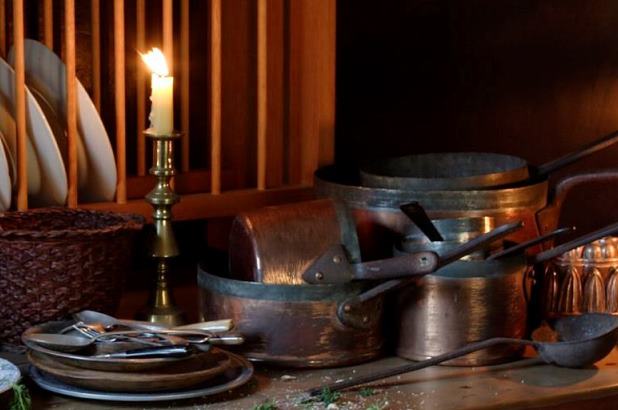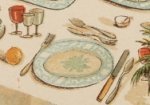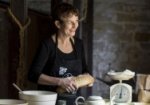If there was any role in any of our 19th-century houses that you’d want to avoid it would surely be the back-breaking, underpaid duties of the scullery maid.
Eliza Heritage (Cassell’s Household Cookery, Casell & Co., Melbourne 1909) defines the role:
The scullery maid is lower in rank than any other domestic servant. She does the rougher work of the kitchen, and is subordinate to the kitchen maid, as the latter is subordinate to the cook. Her work consists almost entirely of scouring saucepans and cooking utensils, washing plates and dishes, scrubbing the larders, kitchen offices, and scullery. She usually dines in the kitchen with the kitchen maid. When only one assistant to the cook is employed, the duties of kitchen maid and scullery maid is performed by one person. The position of scullery maid is not very agreeable, and the duties belonging to it are laborious.
Not very agreeable? That’s a marvellous understatement. There was however an upside:
An untrained girl who enters a large establishment as a scullery maid may easily, if she is quick, willing, and observant, gain an insight into domestic operations, and become practically familiar with the best methods of work, this obtaining knowledge which will fit her to undertake the very responsible duty of a cook.
Sound familiar? Yes, it’s ‘Daisy’ from Downton Abbey. Beeton’s earlier description is downright depressing, but again there’s that high-flying career path to think of!
The position of scullery-maid is not, of course, one of high rank, nor is the payment for her services large. Bat if she be fortunate enough to have over her a good kitchen maid and clever cook, she may very soon learn to perform various little duties connected with cooking operations, which may be of considerable service in fitting her for a more responsible place. Now, it will be doubtless thought by the majority of our readers, that the fascinations connected with the position of the scullery-maid, are not so great as to induce many people to leave a comfortable home in order to work in a scullery.
And yes I’d agree. However….
But we are acquainted with one instance in which the desire, on the part of a young girl, was so strong to become connected with the kitchen and cookery, that she absolutely left her parents, and engaged herself as a scullery-maid in a gentleman’s house. Here she showed herself so active and intelligent, that she very quickly rose to the rank of kitchen-maid; and from this, so great was her gastronomical genius, she became, in a short space of time, one of the best women-cooks in England. After this, we think, it most be allowed, that a cook, like poet, naicitur, nonfit [‘is born, not made’]. Beeton’s Book of Household Management, London 1861, p43
…and the kitchen sink

Stone sink sitting in the Rouse Hill arcade. Photo Scott Hill © Sydney Living Museums
Scattered around the buildings and landscape at Rouse Hill are numerous stone sinks and troughs. In-situ in the house’s scullery however is the proverbial ‘kitchen sink’, a large stone sink carved from a single block of stone. Like the recreated stone sink in Vaucluse House’s scullery it’s set uncomfortably low, suggesting either a very non-ergonomically sound working angle or a maid perched on a stool or even their knees.Very disagreeable.
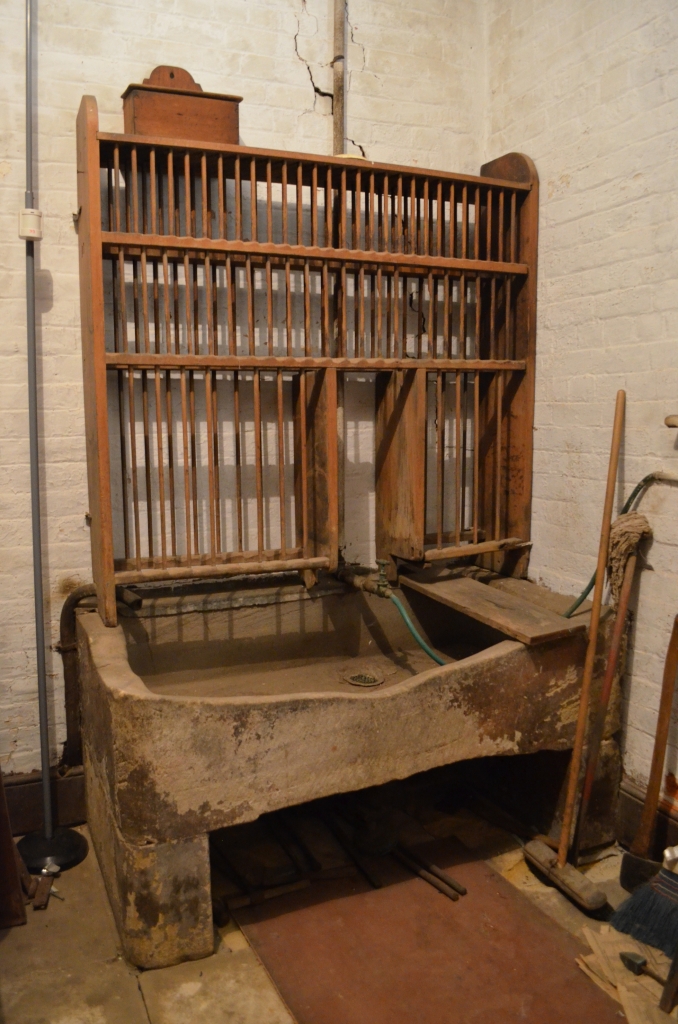
Stone scullery sink at Rouse Hill House. Photo Scott Hill © Sydney Living Museums
Above it sits a pine drainer, secured to the wall. The top rows are for plates, the lowest has tall slots to accommodate large serving platters. Also in the room is a bottle drainer, designed to straddle the sink in front of the plate drainer, and into which bottles were placed neck-down.
The recreated drainer in the butlers pantry at Vaucluse House hangs from the wall to the left of the sink. It has a sloping base so that drips drain into the sink, and has bottle holes in its lower shelf:
Sink and drainer rack in the pantry at Vaucluse House. Photo © Nicholas Watt for Sydney Living Museums
It’s thought that a stone trough long ago placed against the pump and water tank in the service court is originally from the scullery. Its dimensions certainly match, and it even has the characteristic curved dip on the front, also seen on the Rouse’s sink, where ‘knives were sharpened’.
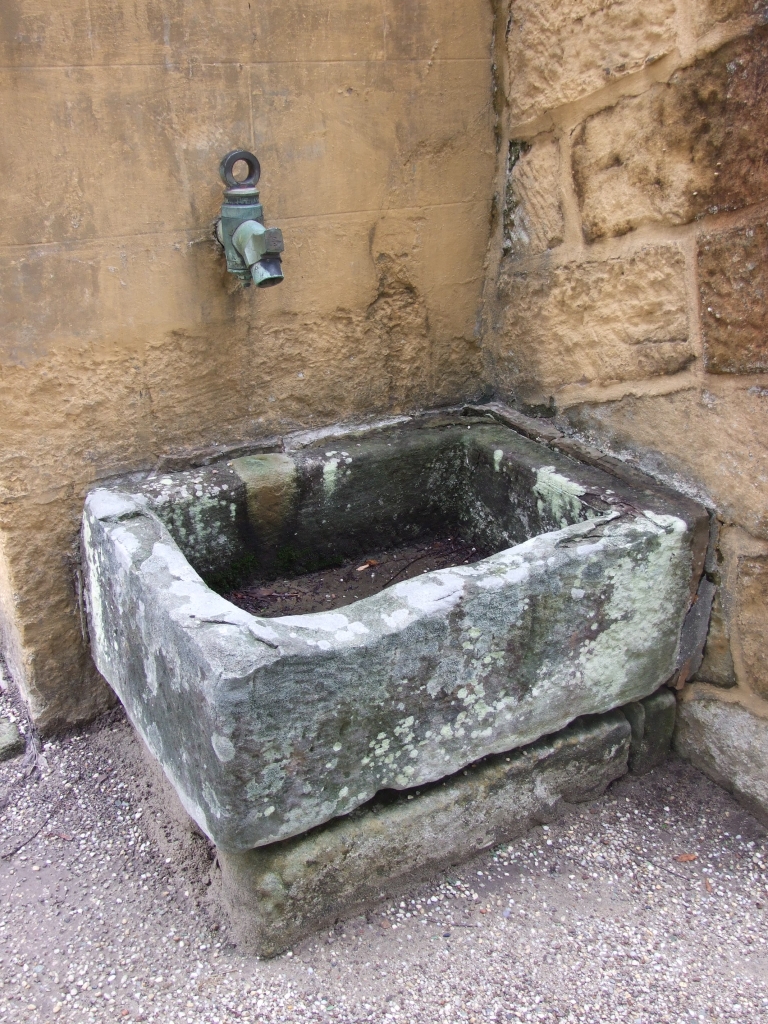
Stone sink in the courtyard at Vaucluse House. Photo Scott Hill © Sydney Living Museums
You’re probably wondering now how the said scullery maid managed not to smash everything in a stone sink. The answer is that wooden troughs or bowls were used as liners when fragile items such as crockery was being washed. If anyone feels like leaving their current job for a satisfying career in the scullery, do let us know, I’m sure we can find a documentary crew who’d love to speak you.
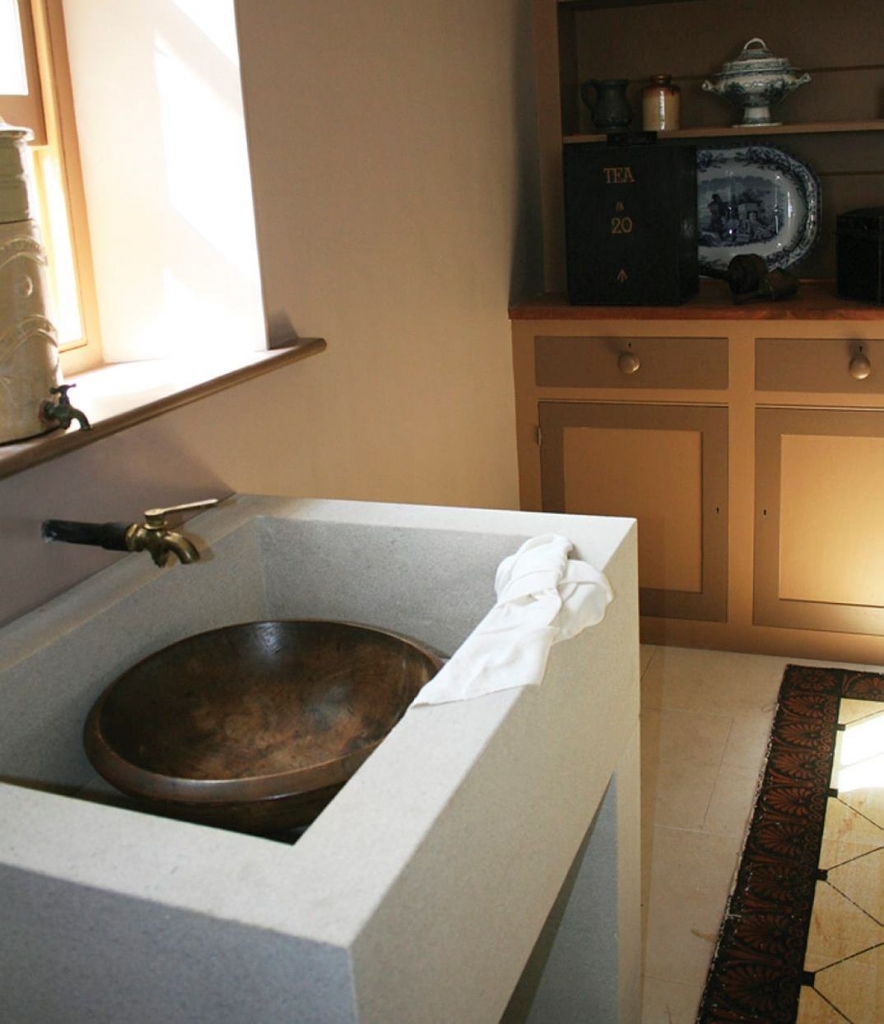
Recreated sink with wooden washing bowl in the pantry at Vaucluse House. Photo Nicole Davis © Sydney Living Museums
